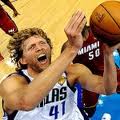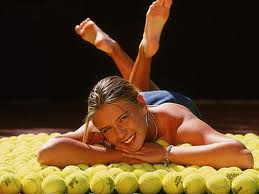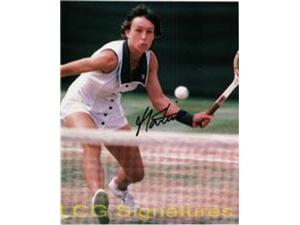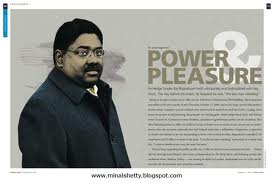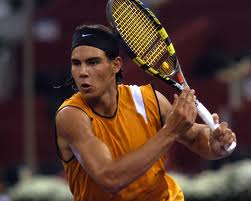An expectation reducing mind-set has come out of the United States Tennis community trying to explain away the remarkable decline in US men’s tennis the past few years. US tennis enjoyed a golden age of tennis where male professional players won more than 25 slams between Michael Chang’s 1989 French Open win and Andre Agassi’s 2003 Australian Open Championship. Since then, the US has won no Men’s Grand Slam championships. At the time of this writing the US has 9 players in the top 100 in the world today, five of those players are near 30 years old or above and are likely to drop out or retire from the top 100 in the near future (At the time of publication 2 players have dropped out of the top 100, down to 7). Pro player development is at a standstill as “keystone cops” management fumbles Grand Slam wild cards substituting washed-up older players for younger players with potential.
USTA executive leadership or pro players have two lines of thought about the US cliff dive out of the tennis world elite. First, US tennis fans are spoiled and they need to expect less. Second, the US tennis public will need to wait 10 years for US tennis to bounce back. Much of this is echoed by sportswriters like Peter Bodo who doesn’t expect things to get better any time soon or Peter Alfano who reports tennis is in a nose dive. Greg Couch, in “From Spoiled to Rotten…” covers the same territory as this article in a qualitative, Royko-esque fashion.
We wondered if there some way to assess and illustrate if American expectations for professional tennis should be abandoned? Is this the end to American Tennis Exceptionalism? Should we expect to be outperformed and viewed as another sport where American supremacy has been bypassed like Lebron and Dwayne watching Dirk Nowitzki driving to the hoop?
In response, we created a methodology called the Secada Population and Economic Country Tennis Efficiency Rating (SPECTER) with a formulation to measure a country’s tennis player performance vs others measured by youth population available to play tennis and by a country’s tennis economic power rating. Note: We’ll address the second, corrosive, 10-year wait line of thought in another post.
Our ratings show the United States radically underperforms the market to the extent that any programs instituted have no impact on US tennis. When adjusting for youth, the United States has more children of tennis playing age than all of its modern European rivals combined including Russia, Spain, France, UK , Switzerland and Serbia. Also, the U.S. is home to one of the grand slams, the US Open, which we have already analyzed as a $1.4 billion economic powerhouse worth $200 million to the cash flush USTA foundation which has $200 million of it’s own money already socked away. When you factor in the economic capability for tennis development the US program is a catastrophe!
First we show the results. We came up with a metric to measure tennis performance by country using number of players in the top 100, providing a power score for each ranking by adding up the difference between 100 and a players ranking. So #1 Novak Djokovic would have 99 points, #10 Andy Roddick, 90 points. When we add up these scores (based on mid July, 2011 rankings) by country, we can compare actual results by country reducing the impact of quantity focusing on total quality of rankings. Note: Tennis historian Phil Secada has done a similar study on power ratings for tennis.
Tennis Players in Top 100 Rankings
| Country | # of Tennis Players in top 100 |
| Spain |
14 |
| USA |
9 |
| France |
8 |
| Argentina |
6 |
| Russia |
5 |
| Serbia |
3 |
| Swittzerland |
2 |
| Great Britain |
1 |
| Australia |
1 |
Weighted Average Strength of Program by Country
| Country | Total Weighted Rankings |
| Spain |
815 |
| France |
519 |
| USA |
372 |
| Argentina |
334 |
| Russia |
268 |
| Serbia |
254 |
| Switzerland |
181 |
| Great Britain |
96 |
| Australia |
29 |
Total Tennis Economic Capability by Country
| Country | Market Potential (Millions) |
| France |
235.67 |
| Australia |
232.30 |
| Great Britain |
214.65 |
| USA |
210.00 |
| Spain |
38.11 |
| Switzerland |
16.50 |
| Russia |
9.29 |
| Serbia |
5.02 |
| Argentina |
4.41 |
Total US Power Efficiency Rating vs. Other Countries or Secada Population and Economic Country Tennis Efficiency Ranking (SPECTER)
| Country | SPECTER |
| Serbia |
48.27 |
| Switzerland |
10.47 |
| Argentina |
7.71 |
| Spain |
3.21 |
| Russia |
1.40 |
| France |
0.19 |
| Great Britain |
0.04 |
| USA |
0.03 |
| Australia |
0.03 |
As shown by the tables above the US appears to have a respectable tennis program ranking second with 9 of the top 100 players in the world after Spain which has fourteen players. Drilling down a bit further even when adjusting for the cumulative rankings of all players by country, the US finishes third behind Spain and France, slightly ahead of Argentina.
But what happens when we adjust country ratings by population and then by the ability to commit economically to tennis development. As discussed above, the US has more people of tennis player development age than all of its main European rivals combined. In addition, the USA is one of four tennis economic super powers. As we discussed in our prior article on the billion dollar US Open, the USTA is a remarkably wealthy not-for-profit with the US Open as its central cash cow. It spends more than $15 million a year on player development and richly rewards their executive staff in total compensation ranging from $8 million in 2009 to $50 million in 2008 with a steady $10 million a year in travel expenses for those executives and others. When factoring in these numbers as shown in our SPECTER Power Ratings, the US finishes dead last among the major tennis countries to an extent that it has a power rating less than 1% of world leader, Serbia. Though Serbia may be a super-charged performance outlier; the US still rates less than 10% as effective as Switzerland, Argentina and Spain.
Demographics is Destiny Everywhere but the USTA Development Program
In providing this analysis, we took a deep dive into the demographics of tennis development age youth by country. Our data came from the CIA factbook and 2010 US Census data. Since detailed 18 and under Census data by country wasn’t readily available, we used CIA factbook data for 14 years and under population as a proxy. Reviewing prior ranking data, we found that most top rated tennis players began playing professional tourneys at 16 or 17 year olds so for development purposes, the numbers aren’t divergent from population trends.
| Country | Population Size 14 Years and Under (Millions) |
| USA |
61.9 |
| Russia |
21.6 |
| France |
12 |
| Switzerland |
1.1 |
| Serbia |
1.1 |
| Great Britain |
10.8 |
| Spain |
7 |
| Europe Total |
53.6 |
| Argentina |
10.3 |
| Australia |
3.9 |
The chart below shows the US placing last among leading tennis countries based on population of potential tennis players. Some may argue that the US has less temperate weather than Australia. But we can eliminate all tennis regions with the exceptions of historical hotbeds California, Florida, Texas, Georgia and Arizona and the US potential population is still greater than every other country combined except Russia which has some bad weather of its own.
Realized Tennis Potential by Population
| Country | Realized Tennis Potential by Population (higher ratings mean better) |
| Serbia |
2309.09 |
| Switzerland |
1645.45 |
| Spain |
1164.29 |
| France |
432.50 |
| Argentina |
324.27 |
| Russia |
124.07 |
| Great Britain |
88.89 |
| Australia |
74.36 |
| USA |
60.10 |
But weather isn’t the only rationale for impact on tennis player development as Serbia worked its way through the breakup of Yugoslavia and a civil war, Spain suffers from massive unemployment and Argentina has had to work through two existential financial crises in the last decade.
Economic Potential for Player Development
After reviewing for population we next determined what is the economic potential for player development. We looked at Gross Domestic Product (GDP) as an indicator but determined that GDP represents a country’s entire economy and would overstate the US and European countries ability to commit to youth tennis development. We also looked at GDP by potential player development population but determined that it would reflect negatively on a small country like Switzerland which has a large GDP/Capita and a small birth rate. Likewise, low birthrate countries like Australia and Great Britain would suffer.
Eat What You Kill
Ultimately, we determined a better measure would be what we call Market Economic Potential (MEP). MEP states that a tennis program can only spend money it has and no more to develop players. We measure MEP by the largest tennis tournament held in a country and the revenue it generates. Though some may argue by purchasing power parity that one tennis dollar in Argentina or Serbia is worth more than a tennis dollar in the US we reviewed purchasing power parity GDP indicators vs country GDP indicators and found less than a 30% variation in real GDP vs. purchasing power parity GDP for any countries involved in this study. So a dollar in Argentina may be worth more than in the US, but not more than 30% more. Negligible since Argentina outperforms the US in tennis by a factor of 10 not .3.
We measure MEP using revenue generated by the largest tennis tournament run by each country’s tennis association. Like the US Open that generates $210 million a year in revenue for the USTA which it then applies about $15 million to player development, most countries have a main tennis tournament which feeds resources into their player development program. Though we don’t have the revenue for each tournament, assuming cost and profit ratios are the same as the US Open, we use prize money as a proxy for revenue and estimate it based on that prize money number which is easily available via the ATP web site. As an aside this approach can only OVERSTATE, the ability of other countries to compete with the U.S.
The Grand Slam (dis) Advantage
Using these numbers, we see that any of the 4 hosts of the grand slams, Australia, France, Great Britain and the United States offer more prize money than the other leading tennis countries combined. As a result we would expect that these countries would have outsized tennis programs with outstanding performance. But outside of France, (with a potential tennis population a bit larger than California’s) with 8 players in the top 100 (4 players under 25), all the grand slam hosts radically underperform the market. It’s as if the Anglo Saxon world forgot how to play tennis. Assuming that all of these countries pay the same sort of $8 million in executive compensation as made by the top 8 or 9 USTA executives, The typical tennis fan sees pay for non-player development and turns off the tv. We can see the value of the prior USTA executives who fixed the broken US Open and doubled revenue from the tournament over the last 10-15 years, but existing programs are in “run the engine” mode with respect to their prized events. The US Open already sells out every year, unless USTA adds seats, there isn’t much new work to be done. But player development has gone into the abyss.
| Country | Score / Market Potential |
| Argentina |
75.67 |
| Serbia |
50.57 |
| Russia |
28.84 |
| Spain |
21.39 |
| Switzerland |
10.97 |
| France |
2.20 |
| USA |
1.77 |
| Great Britain |
0.45 |
| Australia |
0.12 |
It is easy to explain Great Britain’s lack of performance, they have bad weather, but the US has many states with moderate weather that historically have been suppliers of world class tennis talent and are still ripe for tennis player development as US population moves southward. One of the negative statements about US tennis players has been that there are no clay court players coming out of the US. How is this possible when we have Florida, the state that gave us Jim Courier and Chris Evert (Brian Gottfried, Eddie Dibbs and Harold Solomon)?
| Fair Weather States | Potential Tennis Player Population (Millions) |
| Florida |
4.12 |
| California |
9.51 |
| Texas |
6.98 |
| Georgia |
2.55 |
| Arizona |
1.68 |
|
24.84 |
Perhaps the best explanation is that building a complex regionally centralized development program may not be terribly useful if developing players can’t afford the gasoline to get to those centers and don’t like being away from their parents. At the same time there hasn’t been any substantial growth in USTA membership that exceeds US general population growth so it is hard to imagine where USTA dollars are going. Let’s say there are 1,000 meaningful tennis centers around the country, then each center potentially could receive a $15,000 infusion to drive participation, pay the guys in the trenches more and lead more recruiting efforts. But that doesn’t happen under the present regime’s model. Likewise, the USTA web site offers no significant on-line tools for learning tennis or receiving coaching. ($15 million works out to about $15,000 a center.)
Regardless, we believe there are many ways to spend dollars on US tennis on a depth and breadth approach where players can be discovered and as they advance get the coaching they need without prejudice or obstruction.
If development dollars being spent are misdirected then what does work? Serbia and Argentina have secret weapons. It’s called “coaching”. Serbia’s national ascendancy coincides with their usage of Niki Pilic as coach of their national team. Pilic is the only person to win Davis Cup titles as coach of 3 different countries. Marcelo Gomez has been the tennis development coach for US Open Champ Juan Martin Del Potro, Juan Monaco and a plethora of other top Argentinian talent. We stole Jose Higueras from Spain, but so far his main response has been “Ay Caramba” to the broken development program.
And the US has great home-grown coaches who have developed top level talent, won Grand Slams, but are not associated with USTA tennis. Their names, Brad Gilbert and Paul Annacone. Between them they’ve coached players who have won far more grand slams than anyone presently involved with USA tennis. Add in Michael Chang and Jim Courier you’ve got strategies for every surface category.

